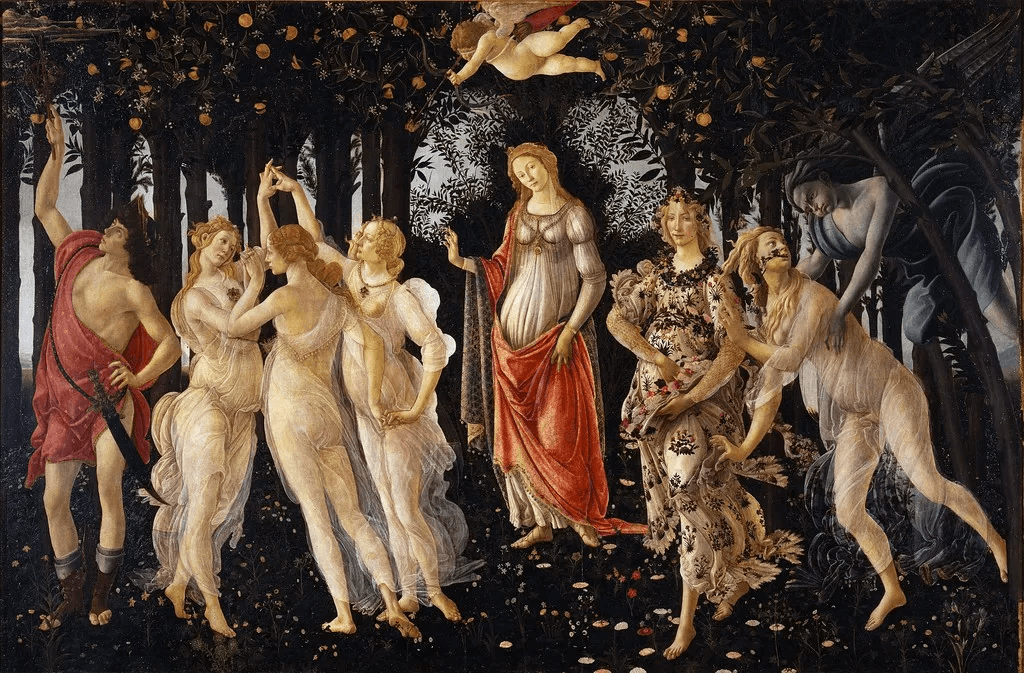
How Botticelli’s Three Graces Changed Art History
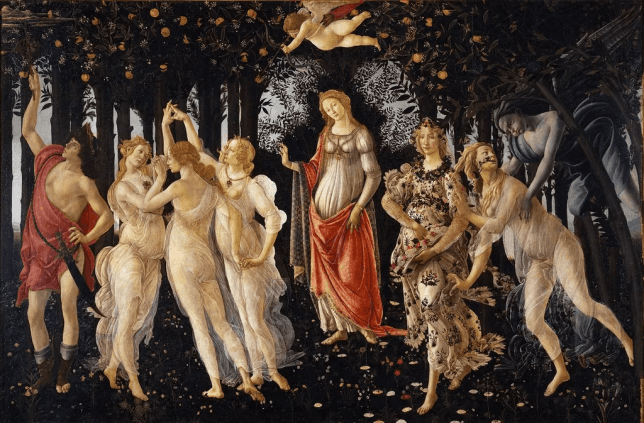
From Raphael to Picasso, the Three Graces were a source of inspiration for mythology enthusiasts and Renaissance artists. However, it is probably Sandro Botticelli who dedicated the most time and work to them. They are now major figures in many of his most popular works. The Italian artist was well-known for his huge canvases incorporating many mythological figures, including Venus and the Three Graces. Primavera, one of his monumental paintings, is surely one of his greatest masterpieces. This allegory for the arrival of spring is impossible to miss in the history of art. Today, Artsper tells you everything you need to know about Primavera’s Three Graces and their influence on art.
Who are the Three Graces?
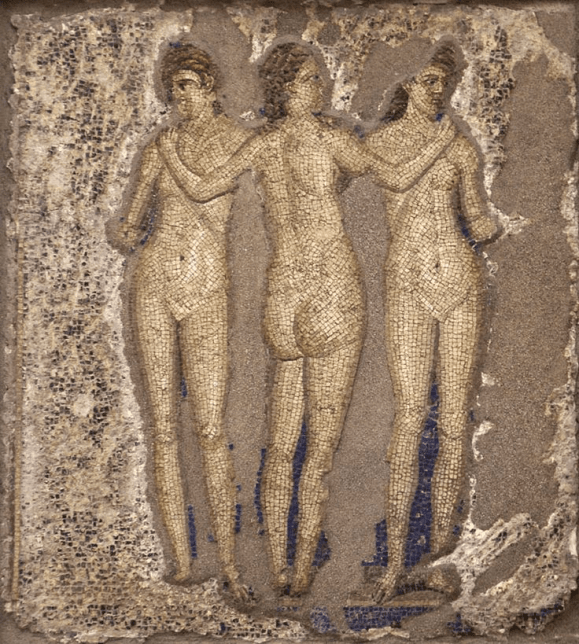
The symbolism of the Three Graces goes back to mythology. The poet Hesiod describes three goddesses: Aglaia (who represents radiance), Euphrosyne (representing joy), and Thalia (representing flowering). Together, they constitute an ideal of beauty and grace. They are thus inevitably close to Venus (also called Aphrodite), goddess of love and beauty. It is, for example, the Three Graces who welcome Venus when she is born. Together, they were often the protagonists of the most renowned Renaissance artists.
Indeed, although they are figures from Antiquity, it was common in the late Middle Ages and in the Renaissance to draw inspiration from this period. Mythology, as well as the customs and art of Antiquity were even glorified. Thus, three major artists of this time represented the Three Graces: Botticelli of course, but also Lucas Cranach the Elder and Raphael.
The comeback of antiquity aesthetic in the Renaissance
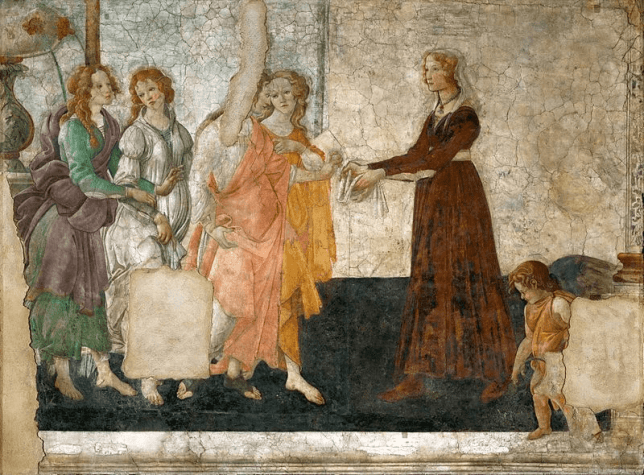
Renaissance was born in Florence, Italy, and extended from the 13th to the 16th century. This movement, of which Botticelli was one of the major figures, gave a special place to philosophy and humanism inherited from Antiquity. Many figures from Antiquity thus appear in the works of this period’s painters and sculptors. The School of Athens by Raphael is a well-known example of this tendency.
Intellectual and humanist texts of Antique literature started to be read again and shared with the invention of prints. The ruins of antique monuments were studied again, as well as Ancient Greek and Roman art. After a period of “decline”, the aim of the Renaissance was to restore the glory of Antiquity. Ancient aesthetic theories, therefore, extended these principles to art as well. In architecture as well as in painting, artists made an effort to share the values of precious and pure beauty.
Botticelli’s La Primavera or The Three Graces marked art history
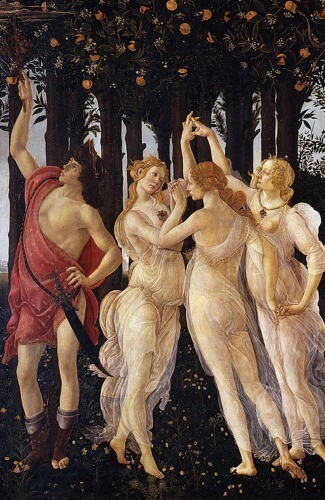
The allegorical representation of spring (primavera in Italian), is without a doubt one of the works that marked art history the most. This sublime and complex composition was made for the wedding of a cousin of the Medicis, the most influential family in Italy at that time.
At the center of the composition is Venus, a recurrent figure of Botticelli’s works. As is often the case, she is accompanied by the Three Graces, who reinforce the symbolism of the goddess of love. Indeed, the role and power of Venus are clearly confirmed by the presence of the Three Graces by her side. Together, they form a feminine, but also a human ideal.
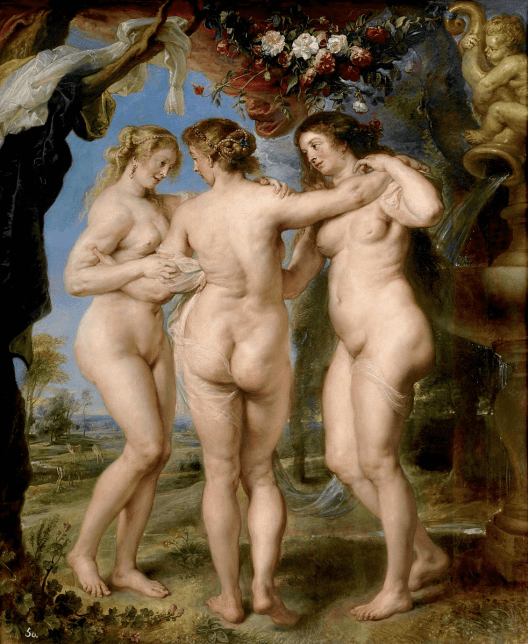
Although they are mythological figures, the popularity of Primavera brought the Three Graces to the forefront. Even several centuries later, the Three Graces keep being at the center of many works. Rubens’ painting from the 17th century depicts them as monumental and nude. It has actually been suggested that one of Rubens’ Three Graces shares similarities with one of his wives and that this work was more important to him than others. It was common for Rubens to incorporate his personal life into his mythological paintings. The Three Graces are here a clear symbol and celebration of love.
When the Three Graces inspire modern artists

Even in the 20th century, the Three Graces stayed a popular subject among artists. The sculptress Niki de Saint Phalle, for example, represents them in her usual style: voluptuous and in movement. Few mythological figures are still as popular nowadays, and one can easily imagine that the undeniable success of Primavera for centuries has something to do with it.

Somewhere between Rubens and Niki de Saint Phalle, Pablo Picasso gave his own interpretation of the three goddesses as well. In this version, we do not yet find the particular cubism of the artist. This work is part of his neoclassical period, during which Picasso painted monumental figures often inspired by Antiquity. Here, even Picasso seems to follow the pre-established model in representing the goddesses. The three women are almost nude and embracing. The artists thus follow the same pictorial tradition established in Antiquity and popularized during the Renaissance.
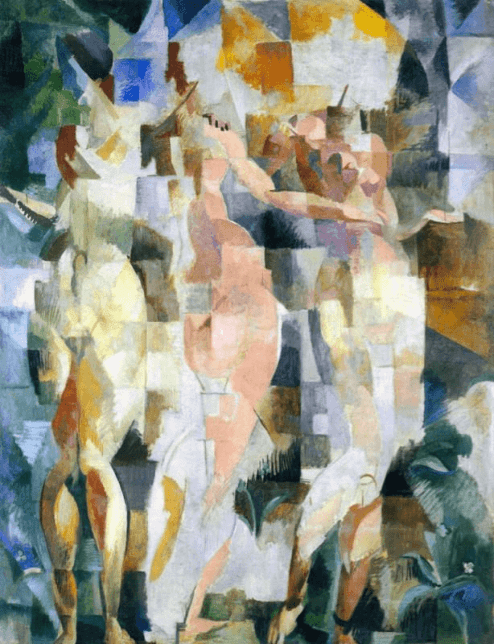
Robert Delaunay’s is probably the most original representation of the Three Graces. By following his usual style where colorful shapes create an impression of movement, Delaunay stays loyal to the avant-garde. The Three Graces harmoniously blend into Delaunay’s universe, adopting the typical shapes and colors of the artist.
In conclusion, the Three Graces managed to remain subject matter in the majority of art historical periods. One notices that, after having been put under the spotlight by Botticelli and Raphael, they became increasingly present. Whether it be in Picasso’s neoclassicism or Niki de Saint Phalle’s iconic sculptures, the Renaissance made the three goddesses a timeless symbol of beauty and grace.

About Artsper
Founded in 2013, Artsper is an online marketplace for contemporary art. Partnering with 1,800 professional art galleries around the world, it makes discovering and acquiring art accessible to all.
Learn more













